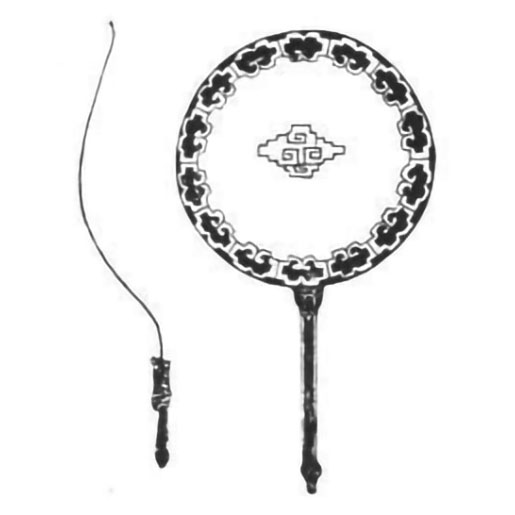the structure of the forehead
112 views · Organized by 线性代数 on 2022-02-11
The drum frame is round, made of a thin wooden slat that is boiled and bent, covered with goat skin on both sides, and fixed with metal drum nails.
The diameter of the drum surface is 25 cm to 30 cm, and the smallest is 20 cm. The thickness of the drum frame is 5 cm to 7 cm. The central area of the leather surface and its surrounding areas are painted with colorful ethnic patterns, and some are also tied with a piece of red silk on the upper end of the drum frame. Or colorful pom-poms for decoration.
The diameter of the drum surface is 25 cm to 30 cm, and the smallest is 20 cm. The thickness of the drum frame is 5 cm to 7 cm. The central area of the leather surface and its surrounding areas are painted with colorful ethnic patterns, and some are also tied with a piece of red silk on the upper end of the drum frame. Or colorful pom-poms for decoration.

Involving musical instruments
Nae (pinyin: Nà é), also known as Reba drum. The Tibetan and Monba people play musical instruments that strike the membrane. The Han people call it the Tibetan hand drum. Popular in Tibet's Qamdo, Nagqu, Nyingchi, Qinghai Yushu, Gannan in Gansu, Ganzi in Sichuan and Diqing in Yunnan and other Tibetan areas. Originally a Tibetan religious musical instrument. It has become an inseparable accompaniment instrument for folk songs and dances such as Tibetan "reba dance". It is called "hand drum" in Chinese. Popular in the Tibet Autonomous Region and other Tibetan-inhabited areas.
Guess you like
Organized by 烟雨燕双飞 on 2022-02-11
When playing, the left hand holds the handle of the drum and the right hand holds the drum to play. Due to the different parts of the drum, the sound also changes greatly.
read >>
 渝公网安备 50010702504639号
渝公网安备 50010702504639号